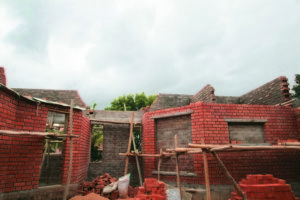Rural India is in distress mostly on account of the distorted policies of the government and pathetic implementation of schemes and programs. Take any area like road, electricity, water, irrigation, or creation of industries and one can see the anomalies. This distortion is all the more glaring in the housing sector. It is estimated that housing shortage in rural India is in the range of 43 million houses, which is more than double the requirement of urban India. Alongside this huge shortage, are factors like the quality of construction, availability of land, facilities like electricity connection, clean drinking water, sanitation etc. The central government’s policies during the last 18 years have no clear provision for rural housing. The National Urban Housing and Habitat Policy of 2007 or the Draft National Rental Housing Policy of 2015 were for the urban housing. It appears that rural housing is not a priority.
of schemes and programs. Take any area like road, electricity, water, irrigation, or creation of industries and one can see the anomalies. This distortion is all the more glaring in the housing sector. It is estimated that housing shortage in rural India is in the range of 43 million houses, which is more than double the requirement of urban India. Alongside this huge shortage, are factors like the quality of construction, availability of land, facilities like electricity connection, clean drinking water, sanitation etc. The central government’s policies during the last 18 years have no clear provision for rural housing. The National Urban Housing and Habitat Policy of 2007 or the Draft National Rental Housing Policy of 2015 were for the urban housing. It appears that rural housing is not a priority.
Obviously, this anomaly is the result of the pervading poverty in the rural India, lack of representation at the policy framing platforms and virtual step-motherly treatment of the rural folk at the hands of the ruling class.
India has two apex organizations for the housing sector – the National Housing Bank (NHB) and the Housing and Urban Development Corporation (HUDCO). Majority of the funds of these two organizations are allocated for urban housing. Even when these organizations have plans on paper for rural India, it remains a fact that these plans have mostly remained on paper.
Apart from these, there are financial services institutions, both in the government and private sectors, that offer finance for housing purposes. But their case too is not different.
For a country like ours, homogeneous growth is possible only when there no mis-match in allocations. Quite like the private and public sector financing organizations queue up to offer their products to the urban masses to meet their housing requirements, it is necessary that they must create products to meet the needs of the rural folk too. Microfinance institutions, which are largely operational in the rural areas, too have a role to play, as they can devise housing finance schemes if necessary with the help of apex financing institutions like NHB and HUDCO. The government can step in and enact laws on the lines of priority sector lending so that there is push for rural housing. And there can also be schemes like the interest subsidy schemes for the economically weaker sections and low income groups in the rural areas too.
In fact, it would do well if the central government decides to create a separate rural housing policy altogether.







